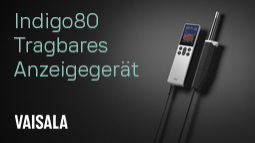Choosing an Optical Particle Counter
In theory, an optical particle counter utilizes a light source, typically a laser diode, to illuminate a selected sample of air that has mechanically controlled flow through a precisely configured nozzle known as an isokinetic probe. As seen in the diagram, the light beam is positioned at an angle to the air sample. A photodetector then measures the light elastically scattered off the particles by reflection, refraction and diffraction. Based on the intensity of the flash, particles can be counted and sized at the same time. It is important to note that the physical properties of the particles can have an effect on the light scattered as various materials absorb light at different rates which will affect the intensity of the light scattered.
There are several variables involved with selecting the optimum particle counter for various applications.
- Resolution - the smallest particle size difference that can be detected.
- Sensitivity - the smallest particle that can be ?seen? at a particular counting efficiency point.
- Counting Efficiency - the particle concentration that can be ?seen? by an instrument against the true particle concentration as measured by a more sophisticated or calibration quality means.
- Precision - the standard deviation of measurements of the same sized particles.
- Repeatability - the extent to which an instrument will give the same response in size and count to controlled or known airborne particle conditions over time.
To keep instruments reasonably portable, most optical particle counters have a lower limit range of about 0.3 microns. This is due to the intensity of the laser light source in a limited size configuration. Instruments typically count in two to six size ranges or ?bins? in near real-time. Most are battery operated with an option to run off AC power with an electrical adapter. Costs range from a few thousand dollars for handheld units to tens of thousands of dollars for sophisticated laboratory grade instruments. Manufacturers typically recommend annual calibration for reliable operation.
High flow counters, typically 1 cfm or 28.3 L/min offer advantages in certain situations. There are even some 2 cfm (nominal) or 50 L/min units on the market. The high flow rate instruments are for conditions where a large volume of air needs to be analyzed. Usually the particle size resolution is reduced and the ability to detect small particles is reduced due to a decreased signal to noise ratio. These units, though considered portable, tend to be somewhat bulkier and heavier to accommodate the larger volume pump and batteries to support operation.
Low flow counters, typically 0.1 cfm or 2.83 L/min offer clear advantages where less air volume is needed such as in spot checks. The lower flow rate allows for smaller particles to be detected as they are in the viewing window longer. This also allows for higher concentrations to be measured. Many of these low flow instruments are handheld, lightweight and battery operated.
Applications where particle size and count are needed include:
- Aerosol research
- Industrial hygiene
- Personal exposure monitoring
- Indoor air quality assessment
- Environmental studies such as EPA compliance
- Verifying removal efficiency in filters or air cleaners
- Process concentration fluctuation
- Particle source identification
- Yield improvement in precision manufacturing processes
- Verifying equipment performance as in building management
- Meeting specification such as air filter ratings
- Meeting regulations or certification as with cleanrooms, safety cabinets, fume hoods or in pharmaceutical preparation
- Quality assurance
- Clearance verification such as HVAC system cleaning
- Verifying environmental controls such as paint booth exhaust
- Monitoring particle migration from construction or remodelling
Selecting the optimum particle counter for a given application depends on the importance of these situational conditions. A person may choose ruggedness and long term repeatability over precision when doing environmental studies, for example. While another person may elect sensitivity and efficiency in a highly sensitive semiconductor manufacturing area where even slight fluctuations in ambient conditions may greatly impact quality and yield.









